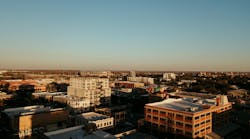There is hardly any need to bring up U.S. Environmental Protection Agency estimates of the billions of dollars needed to repair, replace or upgrade the nation's aging infrastructure. Add to this the need to accommodate a growing population, meet new water quality standards and—oh, why not—let's sprinkle a little bit of water shortage and climate change issues on top, and you will end up with a pretty dire situation.
For the most part, local water and wastewater utilities are supported primarily through user charges. According to a 2002 U.S. General Accounting Office report on water infrastructure funding, for more than 25% of water utilities and more than 40% of wastewater utilities, user charges and other local sources of revenue were not enough to cover the full cost of providing a service—including operation and maintenance, debt service, depreciation and taxes. Additionally, while revenue from user charges was adequate to cover at least operation and maintenance costs for nearly all of the utilities surveyed, approximately 29% deferred maintenance due to insufficient funding. Little has changed since these results were released back in 2002.
As a result, utilities today continuously are turning to financial assistance from federal and state programs. Unfortunately, finding financial assistance for the design and construction of water and wastewater projects these days is like finding a needle in a haystack—and financing is about to get more difficult.
As we prepare this month's issue of Water & Wastes Digest for print, the U.S. government is trying to avoid the nation's first-ever financial default by reaching a compromise to raise the national debt ceiling.
In order to bandage this looming debt crisis, Congress will have to make some deep cuts to various spending programs. So whether this leads to slashing Social Security and Medicare, financial aid for college students, farm subsidies or tax increases, one thing is certain: The pool of financial assistance to fix, upgrade or build water and wastewater systems is about to get a lot smaller. Spending cuts will be especially painful to states that depend heavily on federal funding.
But what are the alternatives? Are water and wastewater utilities going to stop operating? Are they going to stop delivering clean and safe water while protecting public health and the environment? The answer is most certainly not.
Drinking water systems and wastewater collection and treatment are critical. Yet, the cost of water supply and sanitation services remains a bargain.
In 2008, an annual survey of 51 water systems located throughout the country conducted by the NUS Consulting Group found that the average price of water in the U.S. jumped by 7.3%. And since 2003, average surveyed water prices in the U.S. have increased by almost 30%.
While these percentage rates may look steep, the actual cost in dollars reveals a different angle. According to the survey, the highest price paid was in Boston at $5.76 per 1,000 gal, while consumers in Savannah, Ga., enjoyed the lowest water price at $1.09 per 1,000 gal.
I choose not to make a big argument about whether or not water and sewer services are priced adequately. Instead I ask you to do the math: Can a utility cover its rehabilitation and replacement issues by charging its customers just over a half a cent per gallon; how about a cent a gallon?
Download: Here

